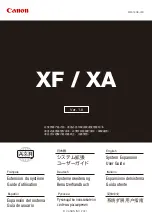
14
Odourless and colourless shielding gas may escape unnoticed if an adapter is used for the
shielding gas connection. Prior to assembly, seal the device-side thread of the adapter for
the shielding gas connection using suitable Teflon tape.
Requirement for
the shielding gas
Especially with ring lines, contaminated shielding gas can cause damage to equipment and
reduce welding quality.
Meet the following requirements regarding shielding gas quality:
-
Solid particle size < 40 µm
-
Pressure condensation point < -20 °C
-
Max. oil content < 25 mg/m³
Use filters if necessary.
Danger from
shielding gas cyl
-
inders
Shielding gas cylinders contain gas under pressure and can explode if damaged. As the
shielding gas cylinders are part of the welding equipment, they must be handled with the
greatest of care.
Protect shielding gas cylinders containing compressed gas from excessive heat, mechan
-
ical impact, slag, naked flames, sparks and arcs.
Mount the shielding gas cylinders vertically and secure according to instructions to prevent
them falling over.
Keep the shielding gas cylinders well away from any welding or other electrical circuits.
Never hang a welding torch on a shielding gas cylinder.
Never touch a shielding gas cylinder with an electrode.
Risk of explosion - never attempt to weld a pressurised shielding gas cylinder.
Only use shielding gas cylinders suitable for the application in hand, along with the correct
and appropriate accessories (regulator, hoses and fittings). Only use shielding gas cylin
-
ders and accessories that are in good condition.
Turn your face to one side when opening the valve of a shielding gas cylinder.
Close the shielding gas cylinder valve if no welding is taking place.
If the shielding gas cylinder is not connected, leave the valve cap in place on the cylinder.
The manufacturer's instructions must be observed as well as applicable national and inter
-
national regulations for shielding gas cylinders and accessories.
Danger from es
-
caping shielding
gas
Risk of suffocation from the uncontrolled escape of shielding gas
Shielding gas is colourless and odourless and, in the event of a leak, can displace the ox
-
ygen in the ambient air.
-
Ensure an adequate supply of fresh air with a ventilation rate of at least 20 m³/hour.
-
Observe safety and maintenance instructions on the shielding gas cylinder or the main
gas supply.
-
Close the shielding gas cylinder valve or main gas supply if no welding is taking place.
-
Check the shielding gas cylinder or main gas supply for uncontrolled gas leakage be
-
fore every start-up.
Summary of Contents for FK 5000
Page 2: ...2...
Page 4: ...4...
Page 18: ...18...
Page 19: ...General...
Page 20: ......
Page 25: ...Connections and mechanical compo nents...
Page 26: ......
Page 28: ...28...
Page 29: ...Installation and commissioning...
Page 30: ......
Page 35: ...35 EN 1 2 1 3 3 2 4 5 6 1 4...
Page 40: ...40...
Page 41: ...Troubleshooting...
Page 42: ......
Page 47: ...Care maintenance and disposal...
Page 48: ......
Page 56: ...56...
Page 57: ...Technical data...
Page 58: ......















































